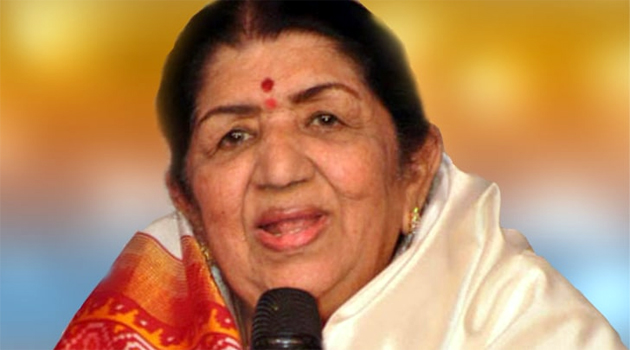Tirthankar Mitra
Her voice could have launched a thousand ships. It did not; instead a million or more persons listen with rapt attention whenever Lata Mangeshkar songs are broadcast and today September 28 when her birth anniversary observed, it was be no exception.
One would hear Mangeshkar’s bhajans first thing in the morning calling upon the listeners to spend the day with good thoughts and similar deeds. Festivals like Holi and Raksha Bandhan would not be the same sans her songs.
Singing for eight decades, Lata Mangeshkar became a part of the lives of the listeners who became her fans. And it occurred without them being aware of it. For hers was a voice which has been inseparable from the sound track of the Indians. In joy and sorrow, pan shops and college fests, there was a Lata Mangeshkar song for every occasion.
When Mangeshkar’s voice and the songs she sang are referred to as evergreen, inarguably the term does not become a cliche. For the voice which gave expression to Waheeda Rehman’s feelings as a woman emerging from a failed marriage in the film Guide was as youthful when Bhagyasree as a young maiden on love in the film Maine Pyar Kiya gave lip to her voice.
Mangeshkar seamlessly knit the past and the present. Her voice carried traces of greatness whose magnification does not depend on the music director’s skills. Lata’s voice conveyed an inner strength and resolve. Be it prosperity or adversity, hers was the theme song. Mangeshkar’s career had been no cake walk. Yet no memories of stumbling, falling and picking oneself up with bloodied knees or elbows ever crept into her songs.
If it was about the sacrifices of the soldiers in a field of battle which had caught India unaware, there were no traces of power and muscle in it. But the sweetness and simplicity of the dirge immortalised in Kaifi Azmi ‘s words had moved Prime Minister Jawaharlal Nehru to tears.
Mangeshkar’s persona resembled her songs. It was always dignified sans any trace of the struggle Pandit Dinanath Mangeshkar’s daughter faced on her way up. There were no short cuts and compromises in her career. For Lata Mangeshkar was always aware of the worth of her voice.
Indeed, it was worth its weight in gold. The film makers and their financiers were only too aware of it and haggling over her fees was never a part of roping her in to sing in a film. And Mangeshkar always knew where she would get the best music composers to set tune to her songs to transcend them from good songs to great ones. Hence her strong Bengal connection with Sachin Deb Burman, Hemanta Mukherjee and Salil Chowdhury yielded dividends.
Be it Parakh or Khamoshi, the two men lent their trademark tunes to Mangeshkar’s songs in these films making them chart busters overnight. But these are no exceptions for Nausadh, SD Burman, Shankar Jaikishan, Jaidev, Laxmikant Pyarelal, RD Burman and Kalyanji Anandji to name a few as Mangeshkar never sang below her mark.
And it was indeed high. This is the reason why people far removed from the generation of the great singer still hum Yaar ki nigaho mein (Night in London 1967), Kaise rahoon chup (Inteqam 1969), Saat Bhai Champa Jagore Jagore, Akash Pradip Jwale Bhorer Paane Cheye, Baho Mein Chale Aao (Anamika 1973), Ajare Aa Nindiya Tu Aa (Do Bigha Zameen 1953) to name a few.
Old timers will recall two Tagore songs she sang in 1953 with Hemanta Mukherjee, Madhu Ghandhe Bhara and Tomar Holo Shuru. They are the stuff connoisseurs rave about till this day. Yet Lata Mangeshkar was no resident of an ivory tower. A cricket lover, she sang for the World Cup winning cricket team in 1983 and the film industry workers after a strike in 1986.
Mangeshkar’s famous voice rendered “soft power” to her countrymen in vast stretches of Asia and Africa. No frog in the well, she was introduced as “the voice of India” by Labour party leader, Michael Foot before her performance at Royal Albert Hall in 1974. Lata’s voice symbolises India. For her voice embodied the cultural heritage and ancient wisdom.
Mangeshkar mingled with great men but she never lost the common touch. A casual visitor sitting tongue tied in her presence on a hot evening at her Prabhu Kunj residence was put at ease when she asked whether he had been given drinking water.
There comes out the greatness of the woman whom her siblings and junior colleagues like to address as Lata Tai. No other individual’s singing voice have so far represented India like that of Lata Mangeshkar. The great music legend of this nation would have been 94 if she would have physically lived. But she is all around. Indians need Lata for every occasion in their lives. (IPA)


